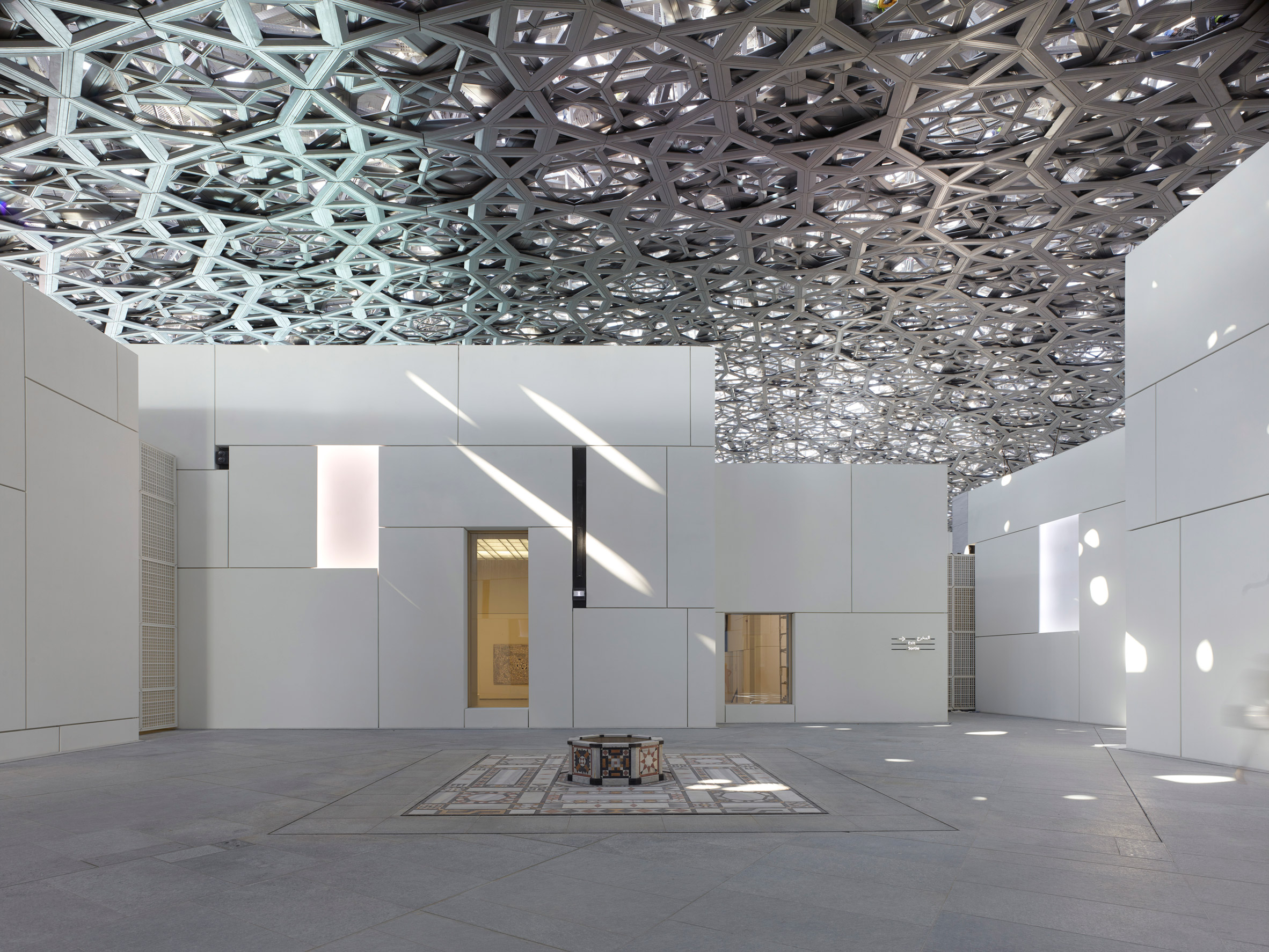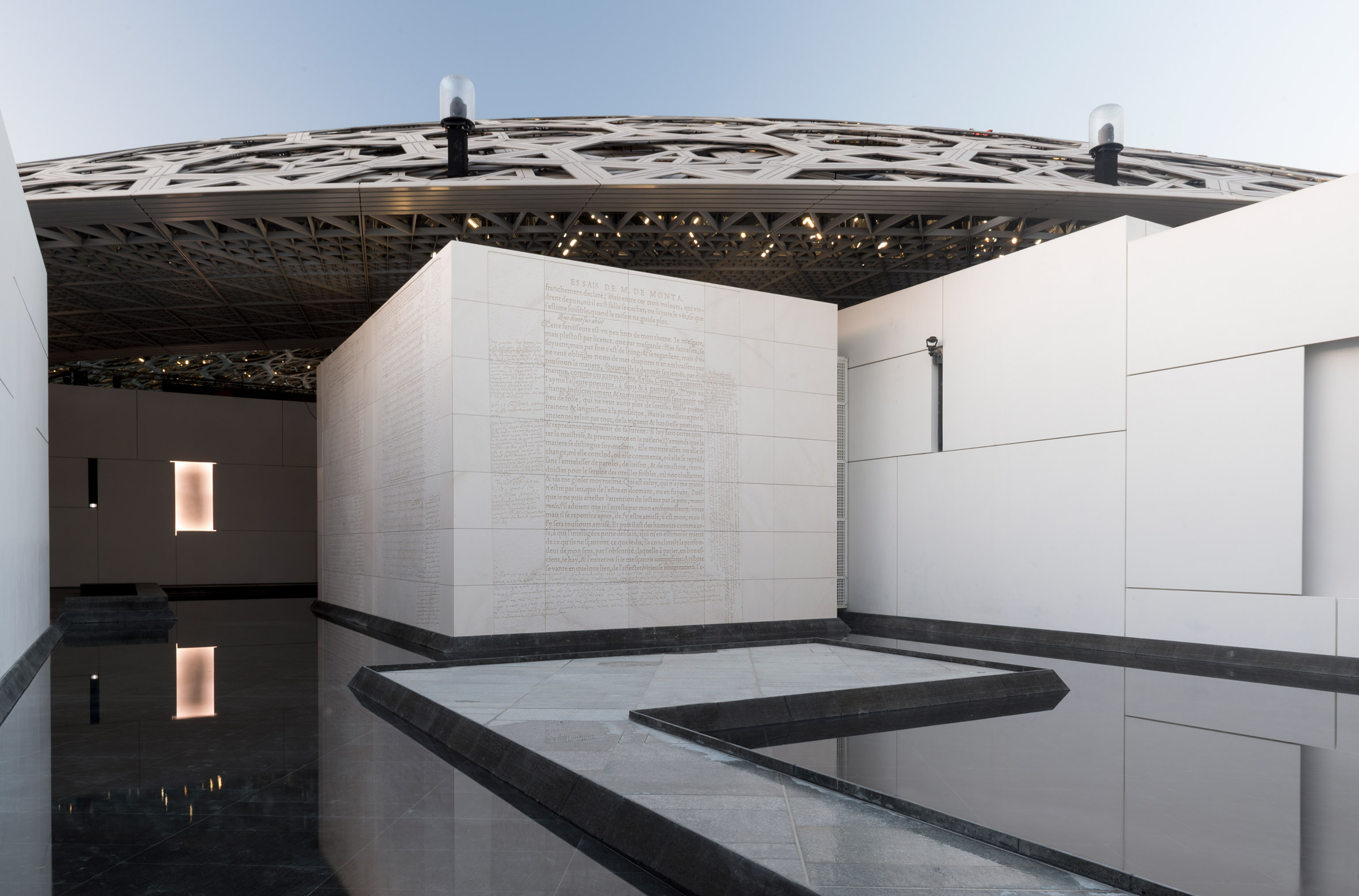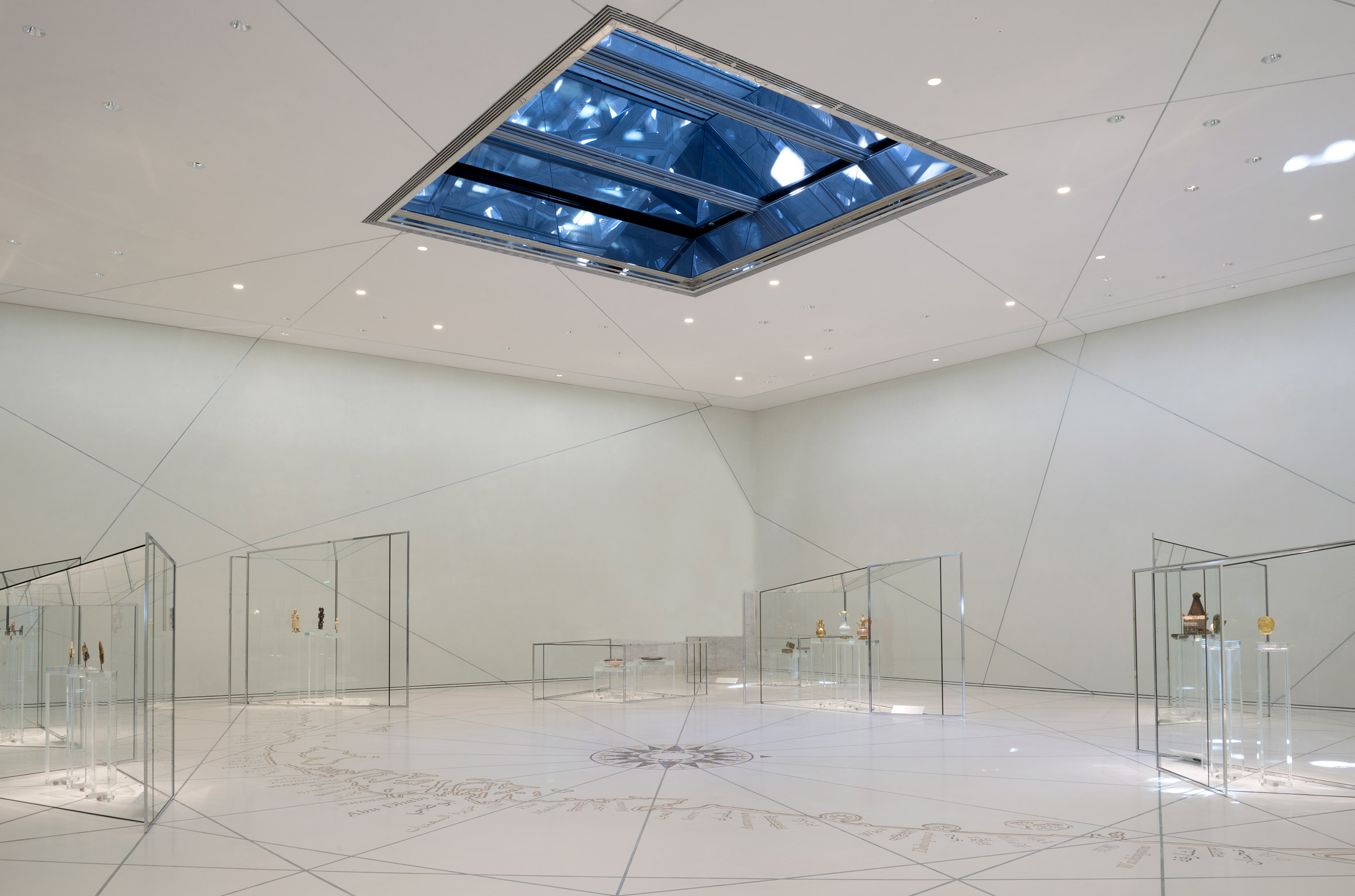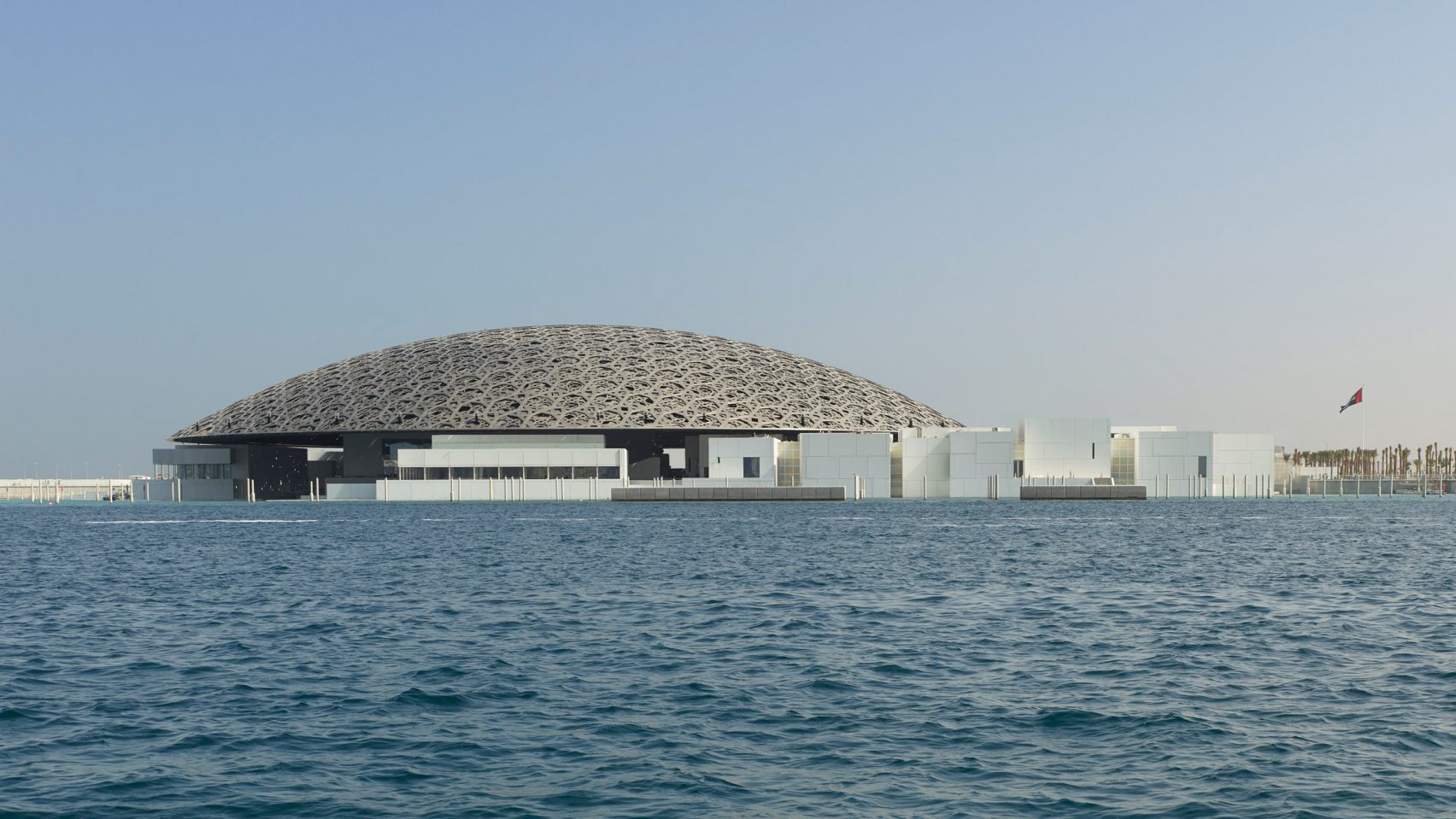The first official photographs of the Jean Nouvel-designed Louvre Abu Dhabi have been released. As the first outpost of the Musée du Louvre outside France, Louvre Abu Dhabi stands on the waterfront of Abu Dhabi’s Saadiyat Island, a man-made island on the coast of the United Arab Emirates capital.
The building forms part of the Saadiyat Cultural District, where it will be joined by the Foster + Partner-designed Zayed National Museum and a new Guggenheim designed by Frank Gehry, although work has yet to begin on that. Almost 8,000 metal stars overlap to form the geometric pattern of the dome. It filters sunlight to create is described as “a rain of light”, throwing flecks of illumination on the white blocks and promenades that forms the building’s interior. “It is a project founded on a major symbol of Arab architecture: the dome. But here, with its evident shift from tradition, the dome is a modern proposal,” said French architect Jean Nouvel.
“A double dome 180 metres in diameter, offering horizontal, perfectly radiating geometry, a randomly perforated woven material, providing shade punctuated by bursts of sun,” he explained. “The dome gleams in the Abu Dhabi sunshine. At night, this protected landscape is an oasis of light under a starry dome.” The semi-outdoor spaces below the dome are used to display specially commissioned installations, while the museum’s permanent collection and temporary shows are housed within white cubic blocks, to create a “museum city”. A well as 6,400 square metres of gallery space – comprising 23 galleries for the museum’s permanent collection, a temporary exhibition space and the Children’s Museum – the Louvre Abu Dhabi also includes a 270-seat auditorium, restaurant, shop and cafe.
Elsewhere in the Middle East, Nouvel is currently completing work on his National Museum of Qatar in Doha. The Pritzker Prize-winning architect’s studio is also working on a residential tower by the Museum of Modern Art in New York and its first residential project in Florida, which will be raised several metres above sea level to address the growing risk of flooding in Miami Beach.




Photography is by Roland Halbe.
